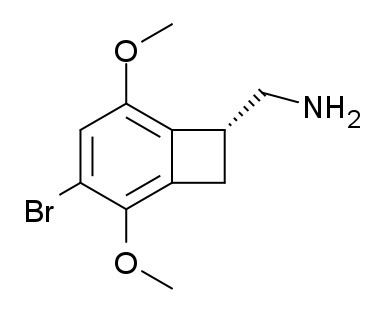Routes ofadministration Oral CAS Number 912440-88-1 ChEMBL CHEMBL379637 ChemSpider ID 17245036 | ATC code none PubChem CID 16086382 Molar mass 272.14 g/mol | |
 | ||
Legal status In general: uncontrolled | ||
Image tcb 2 trip
TCB-2 is a hallucinogen, discovered in 2006 by Thomas McLean, working in the lab of Prof. David Nichols at Purdue University where it was named 2C-BCB. It is a conformationally-restricted derivative of the phenethylamine 2C-B, also a hallucinogen, and acts as a potent agonist for the 5-HT2A and 5-HT2C receptors with a Ki of 0.26nM at the human 5-HT2A receptor. In drug-substitution experiments in rats, TCB-2 was found to be of similar potency to both LSD and Br-DFLY, ranking it among the most potent phenethylamine hallucinogens yet discovered. This high potency and selectivity has made TCB-2 useful for distinguishing 5-HT2A mediated responses from those produced by other similar receptors. TCB-2 has similar but not identical effects in animals to related phenethylamine hallucinogens such as DOI, and has been used for studying how the function of the 5-HT2A receptor differs from that of other serotonin receptors in a number of animal models, such as studies of cocaine addiction and neuropathic pain.
